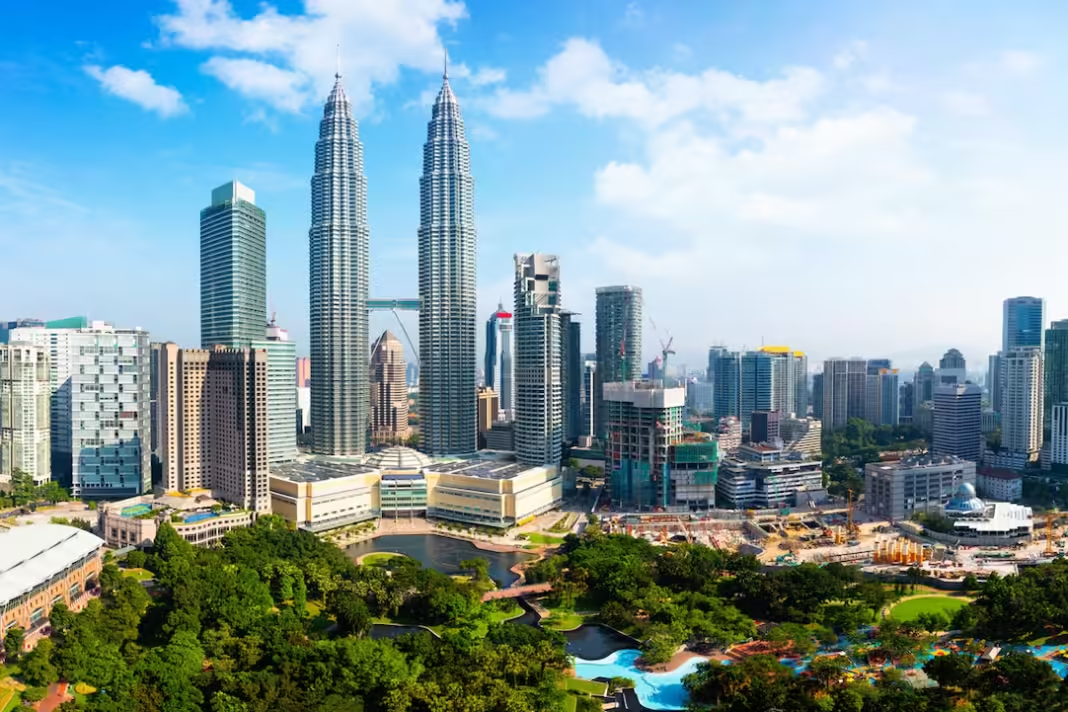Outline:
- Introduction
- Overview of Malaysia
- Blend of modernity and tradition
- Culture and Diversity
- Multicultural society (Malays, Chinese, Indians, and indigenous groups)
- Festivals (Hari Raya, Chinese New Year, Deepavali, Wesak)
- Languages (Malay, English, Chinese dialects, Tamil)
- Cuisine (Nasi Lemak, Roti Canai, Laksa)
- Geography and Natural Wonders
- Division: Peninsular Malaysia and East Malaysia (Borneo)
- Tropical rainforests (Taman Negara, Borneo’s biodiversity)
- Beaches and islands (Langkawi, Tioman, Perhentian Islands)
- Mount Kinabalu
- Economy and Development
- Mixed economy and industrial sector
- Importance of tourism
- Palm oil industry
- Modernization and Technology
- Kuala Lumpur and the Petronas Towers
- Financial sector and start-up ecosystem
- Conclusion
- Malaysia’s unique blend of tradition, nature, and modernization
Introduction
Malaysia, located in Southeast Asia, is known for its rich cultural diversity, stunning landscapes, and vibrant cities. It is a country that seamlessly blends modernity with deep-rooted traditions, offering something for everyone – from towering skyscrapers in Kuala Lumpur to ancient rainforests in Borneo.
Culture and Diversity
One of Malaysia’s most unique features is its multicultural society. The population is mainly composed of Malays, Chinese, and Indians, along with various indigenous groups. This diversity is reflected in the country’s festivals, food, languages, and religious practices.
- Festivals: Some of the main festivals celebrated in Malaysia include Hari Raya (Eid), Chinese New Year, Deepavali (the Hindu Festival of Lights), and Wesak (a Buddhist celebration). Each of these festivals showcases the colorful traditions and customs of the country.
- Languages: While Malay is the official language, English is widely spoken, especially in business and education. Additionally, Chinese dialects (such as Cantonese and Mandarin) and Tamil are commonly spoken among the respective communities.
- Cuisine: Malaysian food is an incredible fusion of flavors. Signature dishes like Nasi Lemak (fragrant coconut rice served with sambal), Roti Canai (a type of flatbread), and Laksa (a spicy noodle soup) offer a taste of the country’s cultural diversity.
Geography and Natural Wonders
Malaysia is divided into two main regions: Peninsular Malaysia and East Malaysia (on the island of Borneo). Each region offers unique experiences for nature lovers and adventurers.
- Tropical Rainforests: Malaysia is home to some of the world’s oldest rainforests, such as the Taman Negara National Park, which boasts rich biodiversity. The rainforests of Borneo are also world-famous, sheltering endangered species like orangutans and pygmy elephants.
- Beaches and Islands: Malaysia’s coastline is dott with idyllic beaches and islands, making it a popular destination for beach lovers and scuba divers. Popular islands include Langkawi, Tioman, and the Perhentian Islands.
- Mount Kinabalu: Located in Sabah, East Malaysia, Mount Kinabalu is the highest peak in Southeast Asia and a bucket-list destination for hikers and mountaineers.
Economy and Development
Malaysia has rapidly developed over the past few decades, transforming itself into a key player in the global economy. It has a mixed economy, with a robust industrial sector, particularly in electronics, oil, and gas production.
- Tourism: Tourism plays a significant role in the country’s economy, attracting millions of visitors annually. Tourists flock to its natural attractions, historic sites, and vibrant cities like Kuala Lumpur, Penang, and Melaka.
- Palm Oil Industry: Malaysia is one of the world’s largest producers of palm oil, a key export commodity that supports the nation’s economy. However, the environmental impact of palm oil production has been a topic of global concern.
Modernization and Technology
Kuala Lumpur, the capital city, is a symbol of Malaysia’s modernization. The city is home to the iconic Petronas Towers, once the tallest buildings in the world, and is know for its cutting-edge technology, thriving financial sector, and a growing start-up ecosystem.
Conclusion
Malaysia is a captivating country that offers a perfect blend of old and new, nature and urban life, and a deep sense of cultural heritage. Whether you’re exploring its bustling cities, relaxing on a tropical island, or trekking through ancient rainforests, Malaysia’s unique charm is sure to leave a lasting impression.
FAQs
- Malaysia’s unique blend of tradition, nature, and modernization
What makes Malaysia unique?
Malaysia is unique due to its cultural diversity, where various ethnic groups live harmoniously, contributing to a rich blend of traditions, languages, and cuisines. It also boasts stunning natural landscapes from ancient rainforests to beautiful islands.
What are the must-visit places in Malaysia?
Popular destinations include Kuala Lumpur for its modern skyline, Penang for its heritage sites and food, Langkawi for its beaches, and Mount Kinabalu for hiking enthusiasts.
What languages are spoke in Malaysia?
The official language is Malay, but English is widely spoke, especially in urban areas. Chinese dialects (Cantonese, Mandarin) and Tamil are also commonly spoke among respective communities.
What are the major festivals celebrate in Malaysia?
Key festivals include Hari Raya (Eid), Chinese New Year, Deepavali (Hindu Festival of Lights), and Wesak (Buddhist celebration).
What are some popular dishes in Malaysian cuisine? Must-try dishes include Nasi Lemak (coconut rice with sambal), Roti Canai (flatbread served with curry), Satay (grilled skewers), and Laksa (spicy noodle soup)


